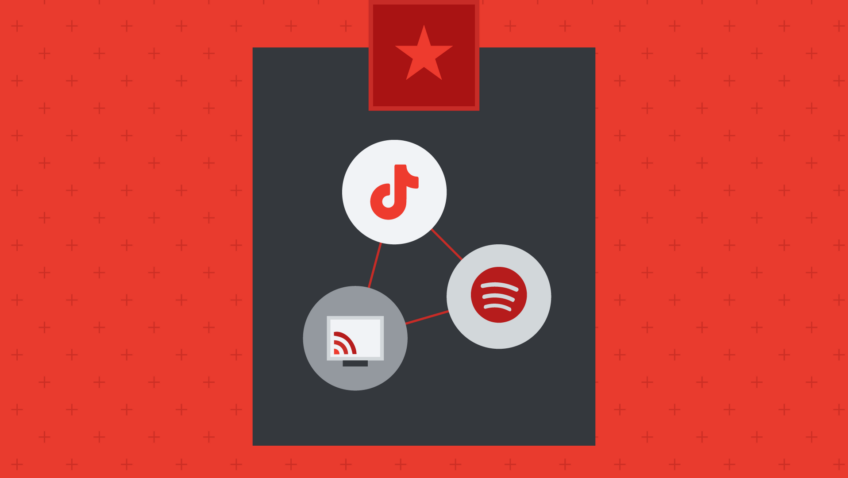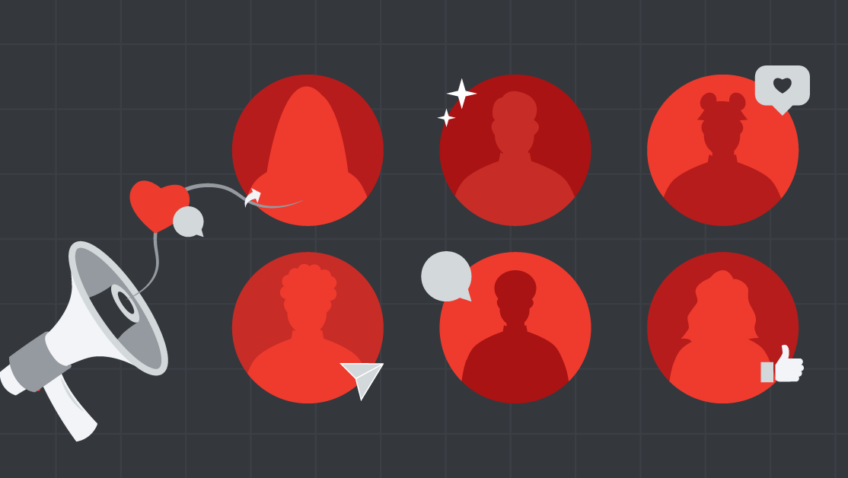Cyber Week Lessons
It’s January—time to break in those new hats and scarves, pick out a fresh calendar for the office, and get organized for the year ahead. Before we plunge into all 2018 has in store, we’re dusting the holiday cookie crumbs off the files on our desks, pouring a cup of coffee, and looking back at that blur of a week that covered Black Friday, Cyber Monday, and Giving Tuesday (remember that week?…when your inbox practically burst into flames?).
Many of our clients took part in some (or all three!) of these days, but most were left disappointed when their results didn’t match the headlines: Black Friday, Cyber Monday, and Giving Tuesday were the biggest on record, more of the action was online, and social media played a massive role—turning the weeks around Thanksgiving into a multi-week cyber blitz.
Here’s a look at how it all went down and CI’s perspective on what to take away for the coming year, particularly for fundraising on social media. We’ll wrap it up with recommendations for 2018 you can take action on today.
Online, all the time.
Gone are the days when Black Friday was solely defined by waking early with a turkey hangover to stand in line in the cold at a big box store. Now, the action starts earlier than ever, extends well past Cyber Monday, and increasingly is done online while in the comfort of your pajamas.
Customers were tuned in for the blitz, and online ad click-through-rates for the week prior to Thanksgiving increased 154% YoY. Online sales grew 28% on Thanksgiving day and 21% for Black Friday compared to 2015. Cyber Monday was the biggest online shopping day yet, raking in $6.8B (that’s a mere $1B increase from last year). It should come as no surprise that mobile sales revenue jumped this year, too, up 43% for the Sunday through Friday of Thanksgiving week alone.
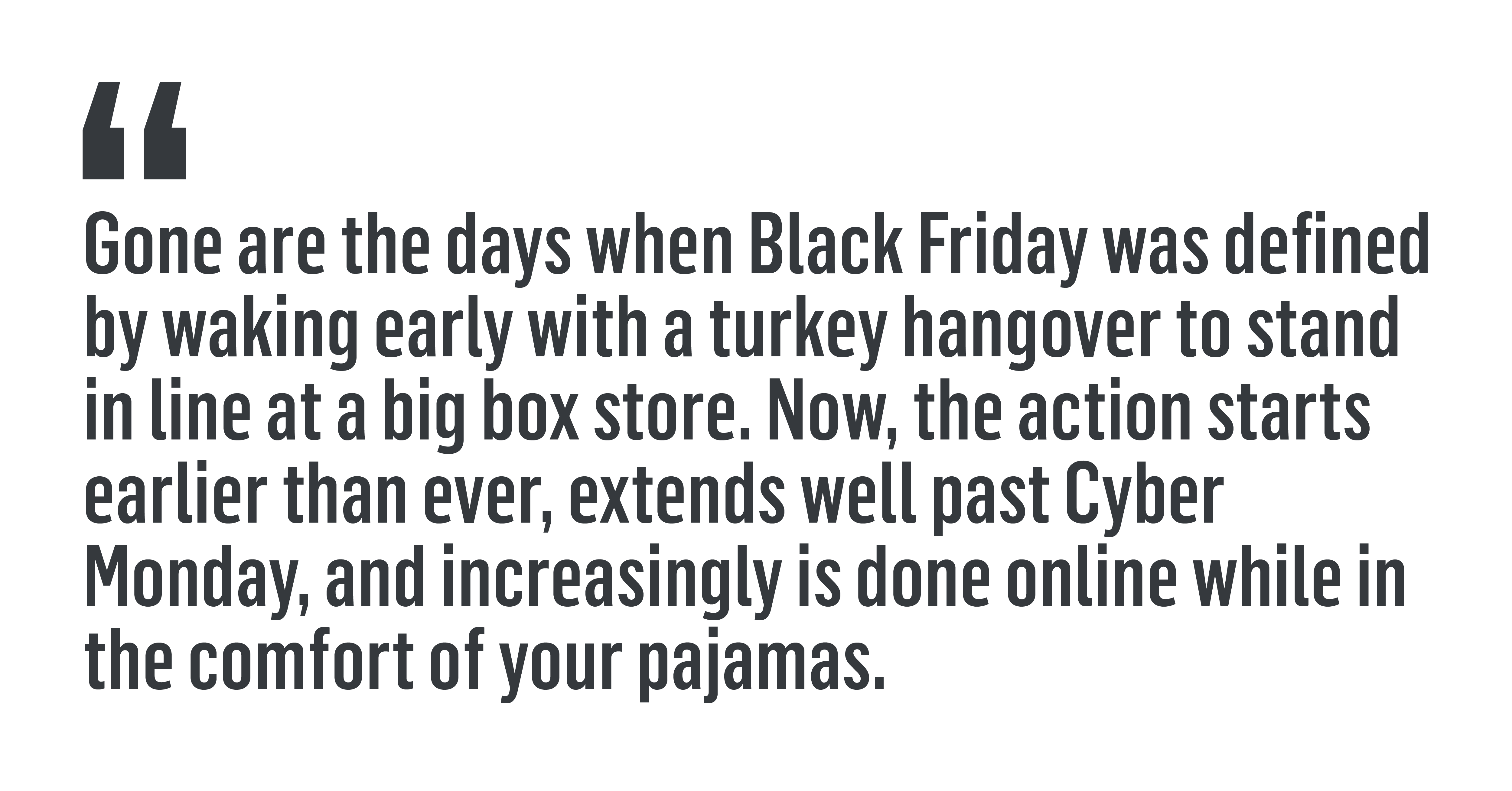
Over the course of the extended Thanksgiving “shopping weekend” there were over 450 million views of Black Friday and related videos on Facebook and more than a third of businesses posted to their Instagram stories. Facebook emerged as central to Black Friday chatter, exceeding other major social media platforms.
It was heartwarming to read that, in the midst of this shopping stampede, Giving Tuesday knocked through another record in its sixth year with best estimates placing it at $274M raised (a whopping 55% increase over 2015’s $166M). Blackbaud reported that about 26% of donations were made on a mobile device (up from 22% in 2016, 17% in 2015, and 13% in 2014), and other platforms reported a similar increase in the importance of mobile. Social played a huge role and the $2M match given by the Bill & Melinda Gates Foundations via Facebook evaporated before you could hit “log in” that morning.
Making sense of the results
With such glowing results on Giving Tuesday globally, what left so many arts organizations in the cold, particularly on social media? It comes down to some fundamentals we should all keep in mind as we approach strategy in 2018:
1. In order for a social media campaign to work (any time of year), it needs time to build momentum. Competition only adds to the challenge.
The market was heavily saturated by highly-resourced corporations and international non-profits, and this drove CPMs sky-high and limited available ad inventory. There’s only so much room in a newsfeed, and this meant that new campaigns with short runs and normally sufficient budgets simply couldn’t get off the ground.
This is backed up by a few clients who did see moderate success– which came in the form of Black Friday and Cyber Monday promotional content that was inserted as part of a larger, strongly established campaign (like around a production of The Nutcracker, with a generous budget and deep targeting pools).
2. Audiences need to expect your message.
If you don’t regularly talk to donors (or potential donors) on Facebook, they’re not going to be tuned in to hear you. It’s a unicorn that’s going to become a donor without any priming. Those organizations who did best on Giving Tuesday have a year-round presence and make compelling storytelling to consistently tuned-in audiences a part of their job.
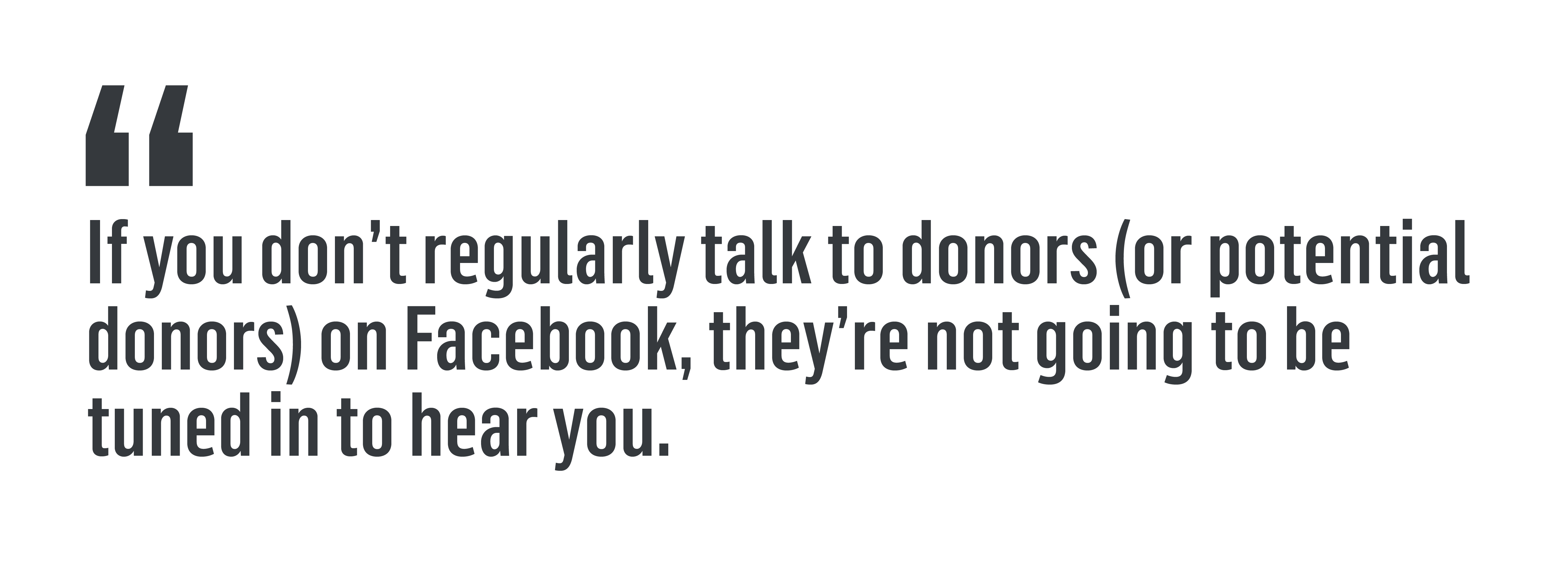
As the old saying goes, you can’t show up on the playground once a year and expect to hang with the kids on the monkey bars who are regulars. Check out Charity : Water and United Way for inspiration and remember the 70/30 rule!
3. Make Facebook’s algorithm work for you, especially when competition is fierce.
If you’re checking the box on the previous point and have a big budget, then you have a chance to get in the game. Facebook’s algorithm favors certain types of content (like live video) and takes inputs (like how people interact with your posts) into the equation. We’re hearing that campaigns that performed well had a strong strategy that was in motion well ahead of time, tapping networks of supporters to promote their content. And, they encouraged Giving Tuesday donors to further broaden impact (in ways budget alone can’t) by encouraging them to post stories about why they donated. If content and engagement isn’t front and center, you won’t make the cut onto news feeds during this competitive time.
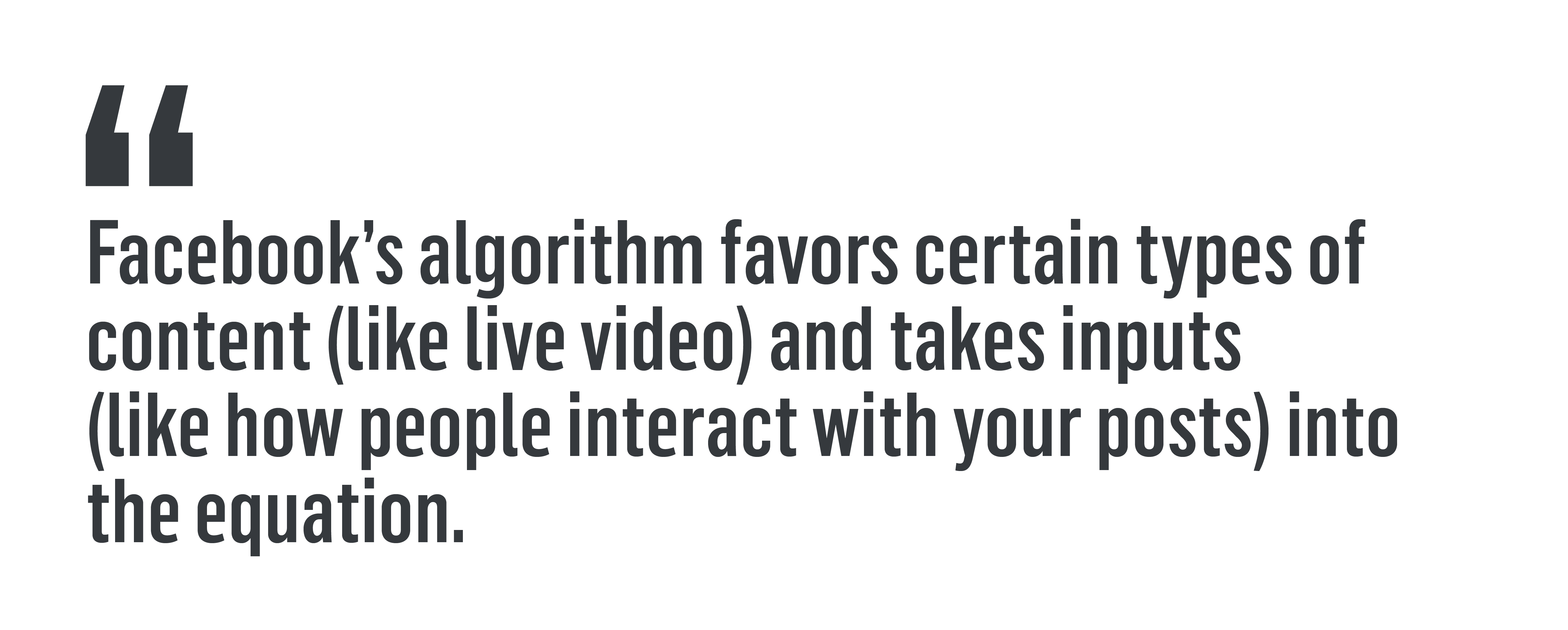
Planning for 2018
Detailed breakdowns aren’t available yet, but consensus is that largest nonprofits benefitted most on Giving Tuesday and smaller organizations were drowned out in the tidal wave of activity. The biggest takeaway is that it’s not the season to dip a toe into social media fundraising or one-off sales.
But, wait- there’s good news! Use of social media campaigns (namely, Facebook, but also Twitter and Instagram) proved hugely effective for many organizations and here are five more lessons you can tap as you plan for year-round engagement for your pool of donors:
1. Successful organizations are relying more on video (including live feeds), knowing that Facebook favors these mediums and they’re compelling to audiences.
2. Remember the long game! Many started early, building awareness and priming donors to give on the big day a month or more in advance.
3. Matching gifts still are an effective technique to drive giving, so keep in mind that this takes advance planning and a generous donor.
4. Social Media is a vital tool, but it needs to be part of a well constructed fundraising strategy. Remember that online giving can come through many channels, and email remains a stand-out performer.
5. Don’t try to compete on social media when you’re at an insurmountable disadvantage- if budget or logistics won’t allow you to play ball in the week around Giving Tuesday, map out smarter times of year for your organization to solicit donations.







